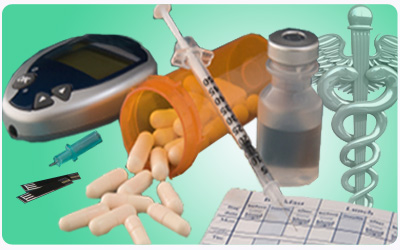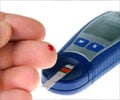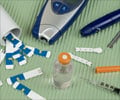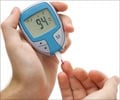- Screening for Type 2 Diabetes - (http://www.who.int/diabetes/publications/en/screening_mnc03.pdf)
About
Diabetes affects a large number of people worldwide and more and more people continue to be affected by the disease. According to recent data, 8.3 percent Americans and almost 10% of Indian population suffer from diabetes. What is even more alarming is that about 27% of them do not know that they suffer from the disease! In fact, studies indicate that the disease may be present even up to seven years before the diagnosis and may be diagnosed only when complications set in.

Diabetes does not cause any symptoms in the initial stages and is detected based on blood tests alone in these stages. If untreated, it results in serious complications like gangrene, kidney failure and blindness. It is also associated with stoke and heart related problems. However, early treatment and control of the blood sugar level may help to avoid these complications.
Screening for diabetes - is usually done to detect cases of type 2 diabetes, which make up for 90-95% cases of diabetes. Screening is not recommended for type 1 diabetes in the general population since it would probably detect very few cases.
Screening for Pre-diabetes - Screening also helps to detect pre- diabetes. Pre-diabetes is a condition where the blood sugar or
Diabetes Screening Tests
1. When should a person start screening for diabetes?
Screening for diabetes should start once a person is 45 years of age. It should be started earlier if he/she is overweight with a BMI of more than 25 km/m2 and has one additional risk factor for developing diabetes. These risk factors include:
- History of diabetes in parent or sibling
- Obesity with a BMI of more than 25 km/m2
- Physical inactivity
- Belonging to races like African American, Latino, Native American, Asian American or Pacific Islander
- Previously identified impaired fasting blood glucose or glucose tolerance test
- History of diabetes in pregnancy or delivery of a big baby
- High blood pressure
- High triglyceride and/or low HDL-cholesterol levels
- Conditions associated with insulin resistance like polycystic ovary syndrome or acanthosis nigricans
- History of disease affecting blood vessels
2. How frequently should tests for screening diabetes be carried out?
Screening tests for diabetes should be done every three years.
3. What are the tests used in screening for diabetes?
The following tests are used to screen for diabetes:
- Fasting plasma glucose levels (FPG)
A Fast Planning Glucose of 100-125 mg/dl indicates pre-diabetes and a level of more than 125 mg/dl indicates diabetes.
- Glucose tolerance tests (GTT)
In a glucose tolerance test, blood glucose levels are measured at the fasting state and 1 and 2 hours after an intake of 75gm of glucose. A blood level of 140-199 mg/dl at 2 hours indicates pre-diabetes whereas a level of more than 150 mg/dl indicates diabetes.
- Hemoglobin A1c level
Hemoglobin A1c testing measures average blood glucose levels for a period of up to 3 months prior to the test. An A1c level of 5.7% to 6.4% indicates pre-diabetes, whereas a level of 6.5% or higher indicates diabetes.
If any of the above tests are abnormal, the diagnosis of diabetes should be confirmed by performing at least one further test on a later day.
Frequently Asked Questions
1) Which doctor should I see for screening diabetes?
You may consult your general physician for
2) Will I have to take lifelong medications once I am diagnosed?
Your doctor may put you on a diet and advise increased physical activity if your sugar is not too high. Once you start the medication, you will probably have to take them lifelong depending on the blood sugar control.
3) Which test is used to screen patients for gestational diabetes?
Glucose tolerance test at 24 to 28 weeks is usually used to screen patients for gestational diabetes.
4) Does hemoglobin A1c test require fasting?
No. You do not need to be fasting for the hemoglobin A1c test.












